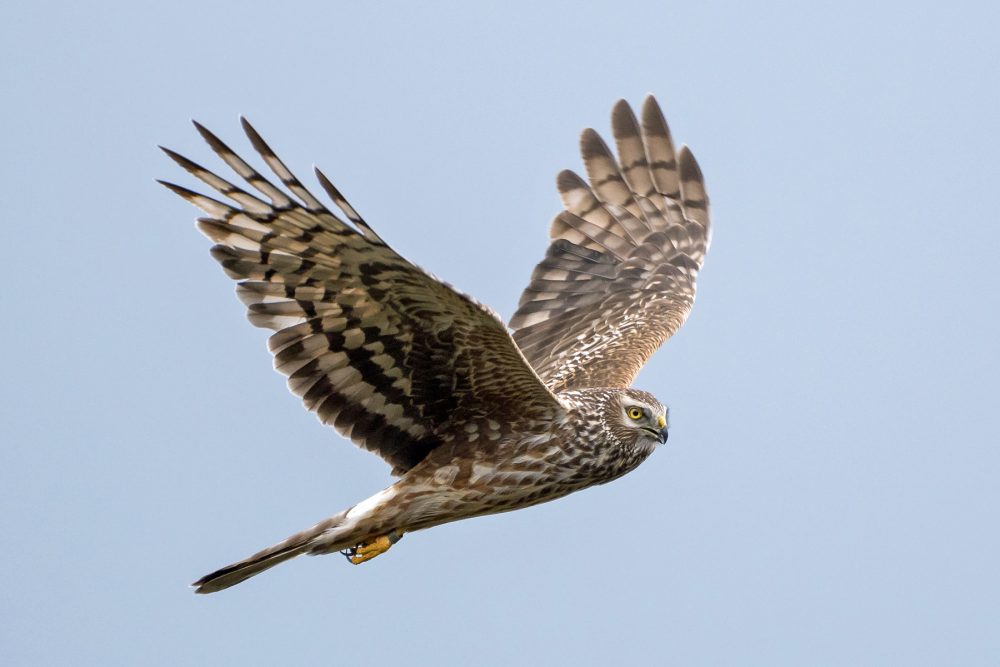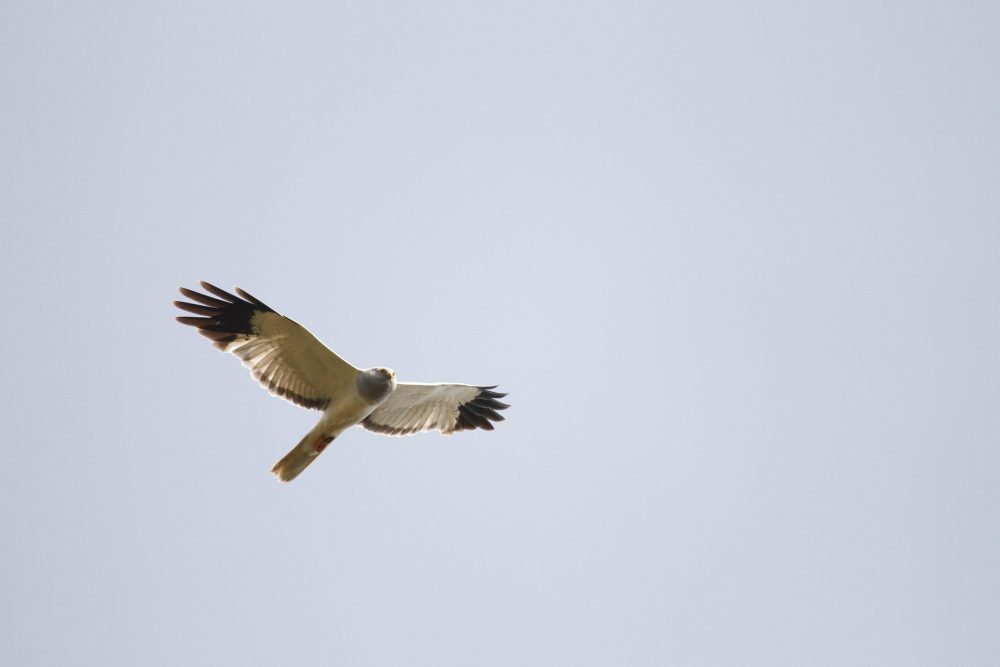RSPB Scotland has called on the public to keep their eyes peeled for one of the UK’s rarest birds of prey – the hen harrier.
As the Scottish weather warms, these birds are becoming more visible as they start their long journeys away from their winter roosting grounds and up to the moors to breed.
Hen harriers are the UK’s most persecuted bird of prey relative to its population size.

In order to build a picture of where these rare raptors are the RSPB are urging that all sightings are reported to the charity organisation.
Their Scottish population is of global importance, but sadly yet it remains far from stable largely as a result of illegal killing by humans.
Hen harriers are medium-sized birds of prey, similar to a buzzard with a slightly slimmer appearance, with long wings and a long tail.
Female and young hen harriers are speckled brown and cream with horizontal stripes on their tails.
The most striking feature is the patch of white at their rump. Males are slightly smaller and pale grey with black wingtips. Both have a round, owl-like face.

Hen harriers’ nest on the ground amongst heather or soft rush in upland areas.
You maybe even lucky enough to encounter their skydancing display, a dizzying aerial show of rolls and dives, performed by either the male and female to mark their territory and demonstrate their vigor.
The RSPB’s Jenni Burrell said: “We are calling on the public to email our Hen Harrier Hotline if they believe they’ve seen a hen harrier.
“This helps us build a picture of where these birds are. Please don’t hesitate to contact us if you see them – we welcome any sightings and appreciate your time.
“Hen harriers are beautiful and elusive raptors and, unlike peregrines and kestrels, they are rarely seen in urban environments.
“If it’s perched on your fence, it’s probably a sparrowhawk, if it’s in a tree by the roadside, it’s probably a kestrel or a buzzard…
“But if it’s over rough pasture or moorland, and matches the description above, then you might have seen a hen harrier.
“Sadly hen harriers are a long way from reaching a healthy, self-sustaining population, and this is largely down to persecution by humans. Particularly where land is managed for the purpose of driven grouse shooting, natural predators like hen harriers can be viewed as pests and, despite being legally protected, the shooting, trapping and poisoning of hen harriers is a serious and ongoing problem.”
The RSPB urges any hen harrier sightings to be reporter to: [email protected]
They ask that any submissions include the date, time, location/grid reference and a description of the bird.

